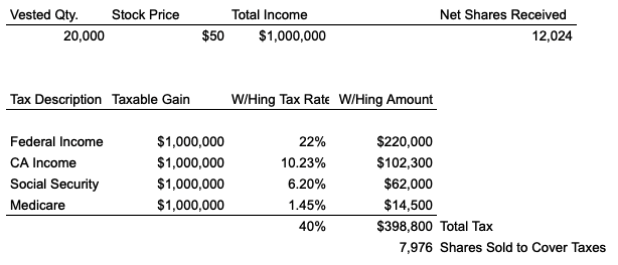Negotiating your startup job offer is no walk in the park. Joining a startup can be an exciting career move, offering opportunities for growth, ownership, and potentially life-changing financial rewards. But startup compensation often includes complex components like equity and accelerated vesting provisions. To help you navigate this process, we’ve created a comprehensive guide to ensure you secure a package that aligns with your worth and goals.
Breaking Down a Typical Startup Job Offer
Before diving into negotiation tactics, it’s important to understand the components of a startup offer. Here’s what you can expect:
- Base Salary: The fixed, regular paycheck—often lower than market rates at mature companies.
- Equity: This can include stock options, Double Trigger RSUs (Restricted Stock Units), or other forms of ownership in the company.
- Bonuses: May be performance-based or tied to company milestones.
- Benefits: Healthcare, retirement plans, and other perks like flexible work arrangements.
Understanding the value and trade-offs of these components is the first step to negotiating effectively.
Why Equity Matters
The equity piece of your startup job offer is often the most crucial—and the least transparent. It represents your potential share in the company’s success. Here’s why it’s important and how to evaluate it:
- Understand the 409A Valuation: Ask when the company’s last 409A valuation was completed. This determines the fair market value of the company’s shares and impacts your equity’s potential AMT impact.
- Assess the Company’s Runway: How much cash does the company have, and how long can it operate without additional funding?
- Determine the Exit Strategy: Is the company aiming for an IPO or acquisition? Knowing this helps you understand the perceived timeline and potential payout of your illiquid equity.
- Negotiate Accelerated Vesting: For director-level or higher roles, request accelerated vesting provisions. This ensures your unvested equity can vest early if the company is sold or goes public during your tenure.
Questions to Ask the Company
To feel confident in your decision, ask these critical questions during the negotiation process:
- When was the last 409A valuation done? Will a new valuation be required for your shares?
- How much runway does the company have? A longer runway indicates greater financial stability.
- How close are you to raising the next round of funding? Learn how the funds will be used and what this means for the company’s growth.
- Are you targeting an IPO or an acquisition? Who are the potential buyers, and what’s the expected timeline?
- What kind of accelerated vesting provisions are available? This can significantly impact your total compensation in the event of an exit.
Reflecting on Your Own Goals
Negotiating a startup job offer isn’t just about the company’s future—it’s about yours, too. Ask yourself these questions:
- What’s driving you to consider this position? Career growth, financial gain, or working on a meaningful product?
- What does your ideal work-life balance look like? Startups are often demanding. Are you prepared for the intensity?
- What’s your risk tolerance? Early-stage startups carry more financial uncertainty, so weigh the trade-offs.
- Do you have a plan for your equity? Whether it’s stock options or RSUs, know how you’ll manage them to maximize value.
- Can you afford to exercise stock options? Low salaries can make it harder to cover the upfront costs of exercising options and paying associated taxes.
Pro Tips for Negotiation Success
- Do Your Research: Use resources like Levels.fyi and H1BData.info to benchmark your role’s compensation.
- Focus on Equity Details: Clarify vesting schedules, exercise windows, and potential dilution from future funding rounds.
- Plan for the Long Game: For more liquid compensation, consider mature startups nearing IPO or offering regular employee buyouts.
- Understand Your Financial Needs: Know your annual expenses and savings goals to balance risk and reward.
Final Thoughts
Negotiating a startup job offer is a vital step in your career journey. By understanding the components of your offer, asking the right questions, and reflecting on your personal goals, you’ll be better equipped to make a decision that aligns with your financial future.
If you’re considering a startup role, take the time to prepare and advocate for yourself. The right offer can set the foundation for both professional growth and long-term wealth.
Looking for more tips on navigating startup compensation and building wealth? Explore our other posts and subscribe to our newsletter for insights tailored to equity-compensated employees. Together, we’ll help you go forth and grow your wealth!
The above discussion is for informational purposes only. Recommendations are of a general nature, not based on knowledge of any individual’s specific needs or circumstances, and there is no intent to provide individual investment advisory, supervisory or management services.














